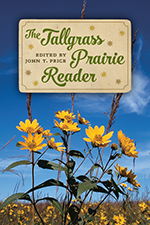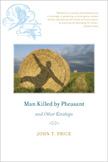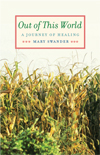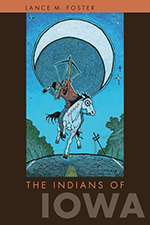The Tallgrass Prairie Reader
when prompted by shopping cart
“The Tallgrass Prairie Reader will transport the reader back to the days of buffalo and immense prairies of history and forward into present-day writings that emphasize the continuing importance of the prairies in our lives. A must-read for anyone concerned with the history and preservation of America’s unique ecosystems.”—Diane D. Quantic, editor, A Great Plains Reader
“Read these impassioned prairie voices as a wilderness adventure story, a cultural history, a landscape memoir. Read them to understand nature’s beneficence, or as a way of kneeling before an ancient, sacred, and unimaginable land. Read them to help cure indifference and rediscover the sublime. Read them to return home.”—Connie Mutel, author, The Emerald Horizon
“Around 1839, Joseph N. Nicollet wrote of the tallgrass prairie that everything ‘is calculated to excite the perceptions, and keep alive the imagination.’ He might have been describing John Price’s collection of writings, distinctive stories from a unique ecological region we’ve nearly lost. With this reader, we may celebrate hope for a tallgrass resurgence!”—Linda M. Hasselstrom, author of No Place Like Home, windbreakhouse.com
“Finally, here is a lovingly gathered bouquet of prairie wildflowers. This collection does not stop at commemorating all that we’ve lost, but revives the wildness in our imaginations—the first step toward restorative action.”—Julene Bair, author, The Ogallala Road
The tallgrass prairie of the early 1800s, a beautiful and seemingly endless landscape of wildflowers and grasses, is now a tiny remnant of its former expanse. As a literary landscape, with much of the American environmental imagination focused on a mainstream notion of more spectacular examples of wild beauty, tallgrass is even more neglected. Prairie author and advocate John T. Price wondered what it would take to restore tallgrass prairie to its rightful place at the center of our collective identity.
The answer to that question is his Tallgrass Prairie Reader, a first-of-its-kind collection of literature from and about the tallgrass bioregion. Focusing on autobiographical nonfiction in a wide variety of forms, voices, and approaches—including adventure narrative, spiritual reflection, childhood memoir, Native American perspectives, literary natural history, humor, travel writing and reportage—he honors the ecological diversity of tallgrass itself and provides a range of models for nature writers and students.
The chronological arrangement allows readers to experience tallgrass through the eyes and imaginations of forty-two authors from the nineteenth to the twenty-first centuries. Writings by very early explorers are followed by works of nineteenth-century authors that reflect the fear, awe, reverence, and thrill of adventure rampant at the time. After 1900, following the destruction of the majority of tallgrass, much of the writing became nostalgic, elegiac, and mythic. A new environmental consciousness asserted itself midcentury, as personal responses to tallgrass were increasingly influenced by larger ecological perspectives. Preservation and restoration—informed by hard science—emerged as major themes. Early twenty-first-century writings demonstrate an awareness of tallgrass environmental history and the need for citizens, including writers, to remember and to help save our once magnificent prairies.
Authors Include:
Washington Irving, George Catlin, Margaret Fuller, Elizabeth B. Custer, Mark Twain, John Muir, Hamlin Garland, Zitkala-Ša, Meridel Le Sueur, Aldo Leopold, John Madson, William Least Heat-Moon, Louise Erdrich, Mary Swander, Lance M. Foster, Lisa Knopp, Steven I. Apfelbaum, and Elizabeth Dodd.






